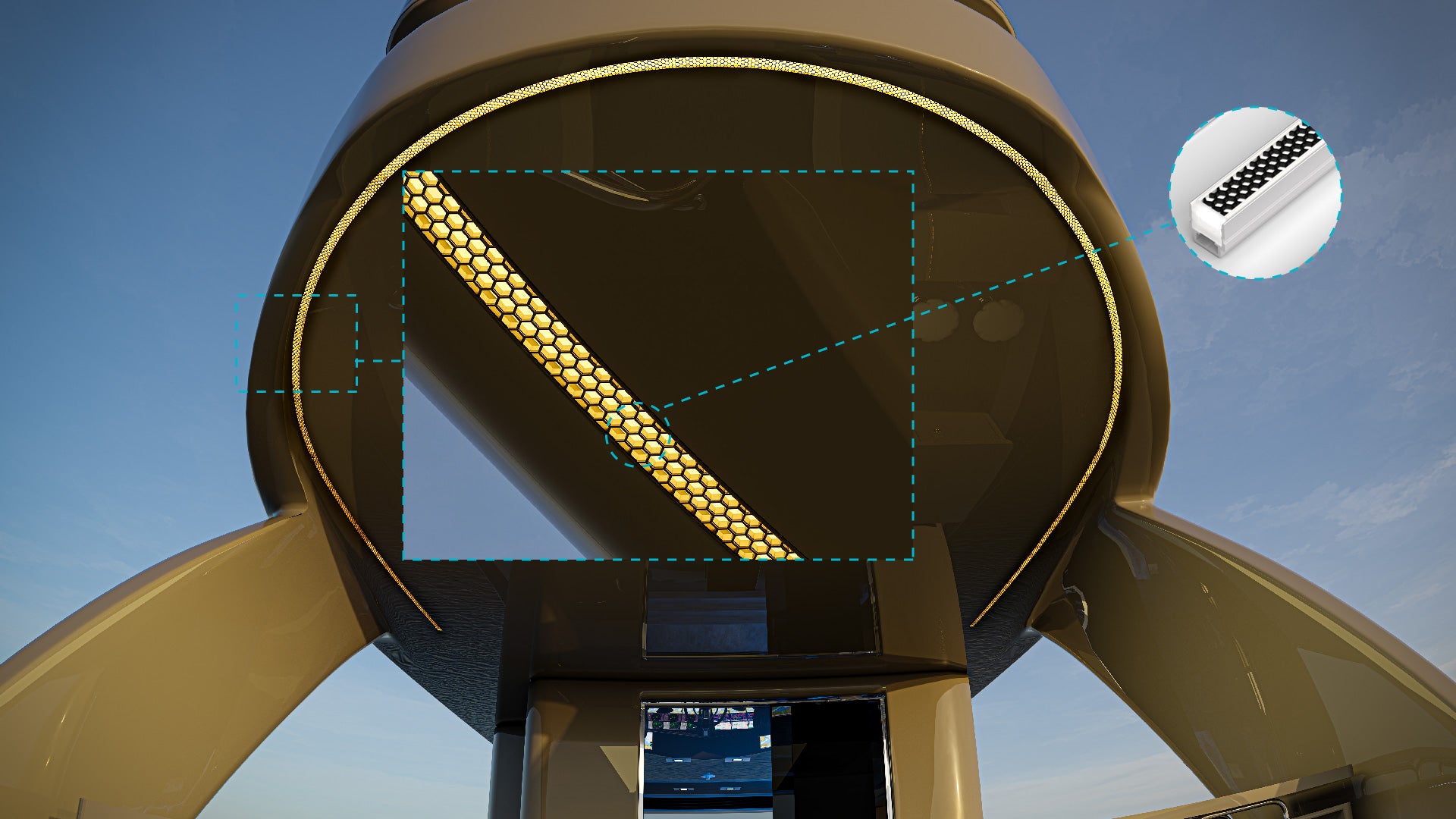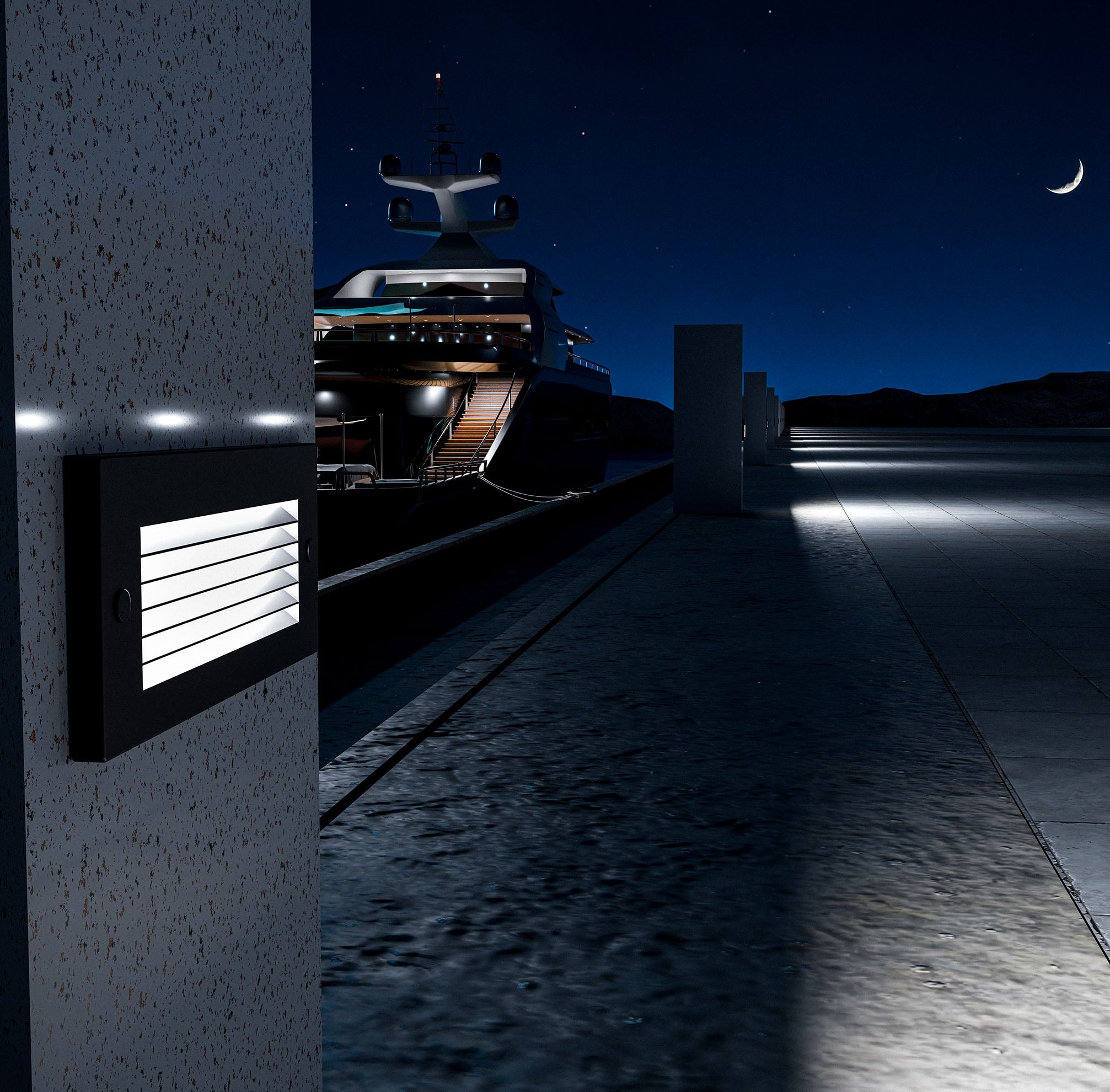The imperative to reduce carbon footprints in marine environments has never been more pressing. In this post learn how Marine LED Lights Reduce Your Carbon Footprint. Marine ecosystems, crucial for biodiversity face increasing threats from pollution. Sustainable lighting solutions, particularly LED lighting, emerge as a crucial tool in the effort to mitigate environmental impact. LED lighting stands out for its energy efficiency, longevity, and reduced carbon emissions, offering a significant step forward in lessening the ecological footprint of marine activities. It becomes clear that embracing this technology is a vital stride towards sustainability in our oceans.
Understanding Carbon Footprints in the Marine Industry
A carbon footprint represents the total amount of greenhouse gases, primarily carbon dioxide, emitted directly or indirectly by an activity. In the context of the marine industry, this encompasses emissions from ships and boats, offshore platforms, and port operations, including those from traditional marine lighting systems. These lighting systems, often reliant on older, inefficient technologies, consume significant amounts of energy, contributing to the overall carbon emissions of marine activities.
The environmental impact of these traditional lighting systems extends beyond just high energy consumption. The production, operation, and disposal of these lighting solutions generate considerable amounts of CO2, exacerbating the marine industry's environmental footprint. This is particularly concerning given the critical role marine ecosystems play in absorbing CO2 from the atmosphere. The increased carbon emissions contribute to the warming of oceans, acidification of seawater, and disruption of marine life, affecting biodiversity and the health of the oceans.
Shifting towards greener alternatives, like LED lighting, is therefore of paramount importance. LED lights consume up to 80% less energy than traditional lighting systems and have a much longer lifespan. This drastically reduces the frequency of replacements and the environmental impact. By adopting LED lighting, the marine industry can significantly reduce its energy consumption and carbon emissions, contributing to the global efforts to combat climate change. This shift not only represents a step towards environmental sustainability but also aligns with increasing regulatory pressures and public demand for greener practices in maritime operations.
The Role of LED Lighting in Reducing Carbon Emissions
LED (Light Emitting Diode) lighting is a revolutionary technology that has transformed the lighting industry with its superior energy efficiency, durability, and longevity. Unlike traditional incandescent and fluorescent lights, which generate light through the heating of a filament or the excitation of gases, LEDs produce light through the movement of electrons in a semiconductor material. This process results in a much higher proportion of energy being directly converted into light, with minimal heat production. Consequently, LED lights can achieve the same level of brightness as traditional lights while consuming up to 80% less energy.
Marine vessels and platforms, the adoption of LED lighting significantly reduces energy consumption. Maritime operations, which traditionally rely on high-intensity discharge (HID) lamps and other less efficient lighting technologies, can see a dramatic decrease in power usage by switching to LEDs. This reduction in energy consumption directly translates to lower carbon emissions.
Benefits of Marine LED Lights Beyond Carbon Reduction
The transition to LED lighting in marine environments brings a host of advantage. These extend far beyond the significant reduction in carbon emissions. Therefore these benefits contribute to environmental sustainability, operational efficiency, and safety in maritime operations.
Longevity and Waste Reduction
One of the most significant advantages of LED lights is their longevity. LED bulbs can last up to 25 times longer than traditional incandescent bulbs and significantly longer than fluorescent and HID lamps. This extended lifespan means fewer replacements, which, in turn, leads to a reduction in waste. Less frequent need for new bulbs not only decreases the environmental impact associated with manufacturing and disposing of lighting but also contributes to resource conservation.
Lower Maintenance Requirements and Costs
The durability of LED lights is another key benefit. LEDs are solid-state lights, which means they are less prone to breakage and wear under harsh marine conditions than their glass counterparts. This translates to lower maintenance requirements and costs. For marine vessels and platforms, where maintenance can be challenging and costly, the reliability of LEDs can lead to considerable operational savings
Improved Safety and Visibility
Safety in marine environments is paramount, and LED lighting significantly contributes to this aspect. For instance, LEDs provide brighter, more uniform light that can be directed where it's needed most, improving visibility on decks, in engine rooms, and at docking facilities. Better illumination helps in preventing accidents and ensures safer working conditions for crew and port personnel. Furthermore, the capability of LEDs to operate efficiently in cold temperatures makes them ideal for lighting in extreme marine environments.
LED lights can be designed to minimize light scatter and direct light precisely where it is needed. This reduces light pollution. This is particularly beneficial in marine areas, where excessive artificial light can disrupt marine wildlife. By limiting light spill into the water, LED lighting can help protect nocturnal and migratory species sensitive to artificial lighting. This targeted illumination enhances the ecological compatibility of marine operations, aligning with broader environmental conservation efforts.
Implementing LED Lighting Solutions with K2 Lighting
Adopting LED lighting is a strategic decision that enhances efficiency, sustainability, and safety in marine environments. In addition, K2 Lighting specializes in providing high-quality LED lighting solutions tailored to the unique needs of marine applications. Here’s how to navigate the transition to LED lighting with K2 Lighting’s expertise.
Transitioning to LED Lighting
- Conduct a Lighting Audit: Start with a comprehensive audit of your existing lighting systems to identify upgrade opportunities and prioritize areas for immediate improvement
- Plan for Phased Implementation: A phased approach allows for the gradual replacement of traditional lighting with LED alternative
- Recycling and Disposal: Properly dispose of or recycle old lighting fixtures and bulbs in accordance with environmental regulations. K2 Lighting can provide guidance on eco-friendly disposal practices.
Support and Services from K2 Lighting
- Consultation and Customization: K2 Lighting offers personalized consultations to understand your specific requirements and provide customized lighting solutions that fit your operational needs.
In conclusion, The shift towards LED lighting in the marine industry represents a significant stride toward environmental sustainability. The longevity and durability of LED solutions contribute to reduced waste and maintenance requirements. This further solidifies their role in sustainable maritime operations.
Every stakeholder in the marine industry, from vessel operators and shipbuilders to port authorities and offshore platforms, plays a crucial role in reducing carbon footprints. By adopting sustainable practices and technologies such as LED lighting, the industry can collectively contribute to the preservation of marine ecosystems and combat the broader challenges of climate change.
We encourage all participants in the marine industry to consider how Marine LED Lights reduce your carbon footprint. K2 Lighting, leading Marine LED light manufacturer offers a range of marine LED lighting solutions designed to meet the diverse needs of this critical sector. With our commitment to quality, sustainability, and customer support. K2 Lighting is your partner in achieving a greener, more sustainable maritime future.
Embrace the change. Contribute to a healthier planet by choosing K2 Lighting Marine LED lighting solutions for your vessels and facilities. Together, we can light the way to a sustainable maritime industry.





